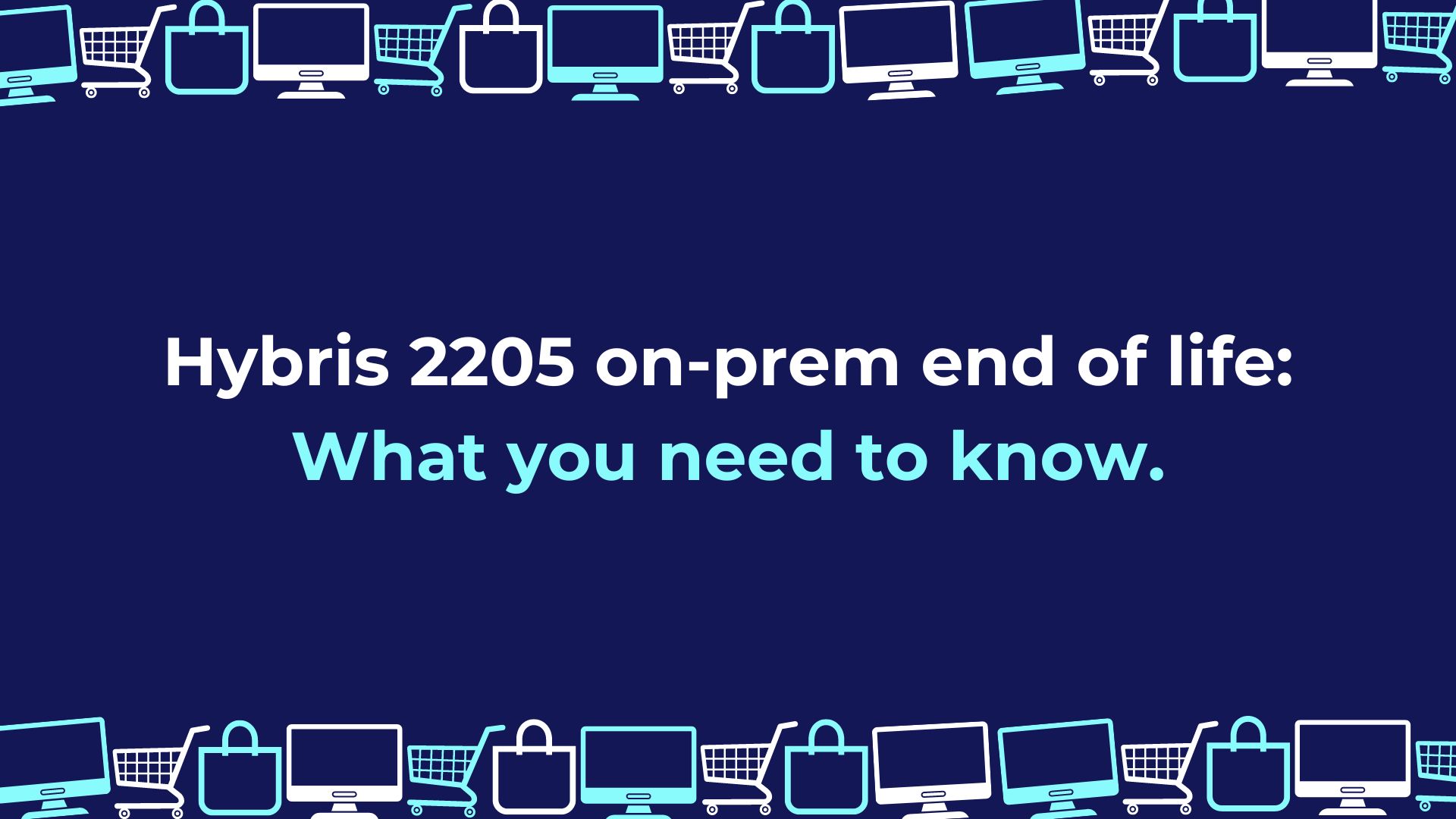For businesses relying on Hybris on-prem as their eCommerce platform, SAP has announced the end-of-life (EOL) for Hybris on-prem 2205. The official EOL date for Hybris on-prem is July 31, 2026, and this signifies the end of its development and support. This can potentially impact ongoing maintenance, security, and the future functionality of your online store.
Eventually, this can also lead to vulnerabilities and disruptions in your online store, and while SAP might offer a grace period (it has not yet been confirmed), it’s crucial to have a plan in place before the EOL date to ensure your site stays secure, and also within PCI compliance.
I wanted to put together some options for on-prem users, next steps, and what I feel is important to consider heading into this crucial time for your site.
Let’s take a look at the options for Hybris on-prem users to get started.
Options for Hybris on-prem Users
As you navigate the Hybris on-prem EOL, there are a few options to consider:
- Upgrading to SAP Commerce Cloud: SAP offers SAP Commerce Cloud as a cloud-based alternative. This solution does promise more scalability, enhanced security, and automatic updates, ensuring your platform stays current. While migration can be challenging, the long-term benefits of a cloud-based solution are worth the challenges.
- Third-Party Support: The possibility of support from third-party vendors specializing in Hybris is also an option for your business. This can provide continued maintenance and bug fixes, but considering the cost, expertise of the vendor, and potential limitations compared to official SAP support are important.
- Migrating eCommerce Platforms: This requires a thorough review of various platforms, their features, and migration complexity. While this may seem like an over-the-top solution, sometimes, migrating platforms can be a more cost-effective option for your business.
If you are looking at migrating platforms, here’s how Adobe Commerce and BigCommerce compare to SAP Hybris.
Adobe Commerce vs SAP Hybris
When it comes to Adobe Commerce, it is a great fit for medium to large-sized businesses looking for a more robust solution with content management capabilities, and it is a highly customizable platform with extensive third-party extensions. This allows you to tailor the platform to your specific needs and scale up as your business grows.
On the flip side, if you’re a large enterprise already invested in the SAP ecosystem, SAP Hybris offers seamless integration with your existing SAP solutions like ERP and CRM. SAP Hybris also boasts robust data analysis capabilities and strong omnichannel fulfillment features, providing valuable insights and a unified customer experience across channels.
While Adobe Commerce offers a wider range of payment gateway options through third-party integrations, SAP Hybris might require custom development for integration with non-standard gateways. Most-importantly, recent developments suggest a potential shift in focus for SAP Hybris within SAP’s strategy. This could mean the platform may not be as supported as it used to be, but it is hard to say for certain.
Now, let’s take a look at BigCommerce compared to Hybris.
BigCommerce vs. Hybris:
Over the last few years, BigCommerce has emerged as a more cost-effective (and user-friendly) alternative to Hybris. One of the biggest differences between BigCommerce and Hybris, is the overall pricing. BigCommerce is a Software-as-a-Service (SaaS) platform with predictable pricing, and it eliminates the potentially high licensing fees associated with Hybris. If budgets have been adjusted this year, this can be a great cost-effective alternative!
Out of the box, BigCommerce has a ton of built-in features and native functionality that reduces the need for expensive customizations. With Hybris, there are some customizations that are required for additional functionality which can be an additional cost. Launching your online store becomes a breeze with BigCommerce’s pre-built themes and native apps. This eliminates the need for extensive development work compared to Hybris, allowing you to get your business online faster.
When it comes to maintenance and support, BigCommerce takes care of maintenance and guarantees superior uptime and security. This frees up your IT resources and allows you to focus on growing your business, unlike the potentially higher IT overhead with Hybris.
Lastly, BigCommerce simplifies PCI compliance with a built-in automation that reduces costs associated with manual processes needed for compliance with Hybris.
Next Steps and Recommendations
The best course of action is to create a well-defined migration plan.
We recommend reaching out to SAP for official guidance on available options and support for the transition.
Additionally, explore resources like articles and webinars offered by SAP or an agency partner to gain a deeper understanding of your migration options, and what the best course of action is for your business.
Conclusion
The Hybris on-prem EOL announcement requires a proactive approach from businesses.
By evaluating your options and creating a solid plan, you can ensure a smooth transition and continued success for your online store.
Remember, taking action before the EOL date is crucial to minimize disruption and maintain a secure and functional eCommerce platform.
Resources:

